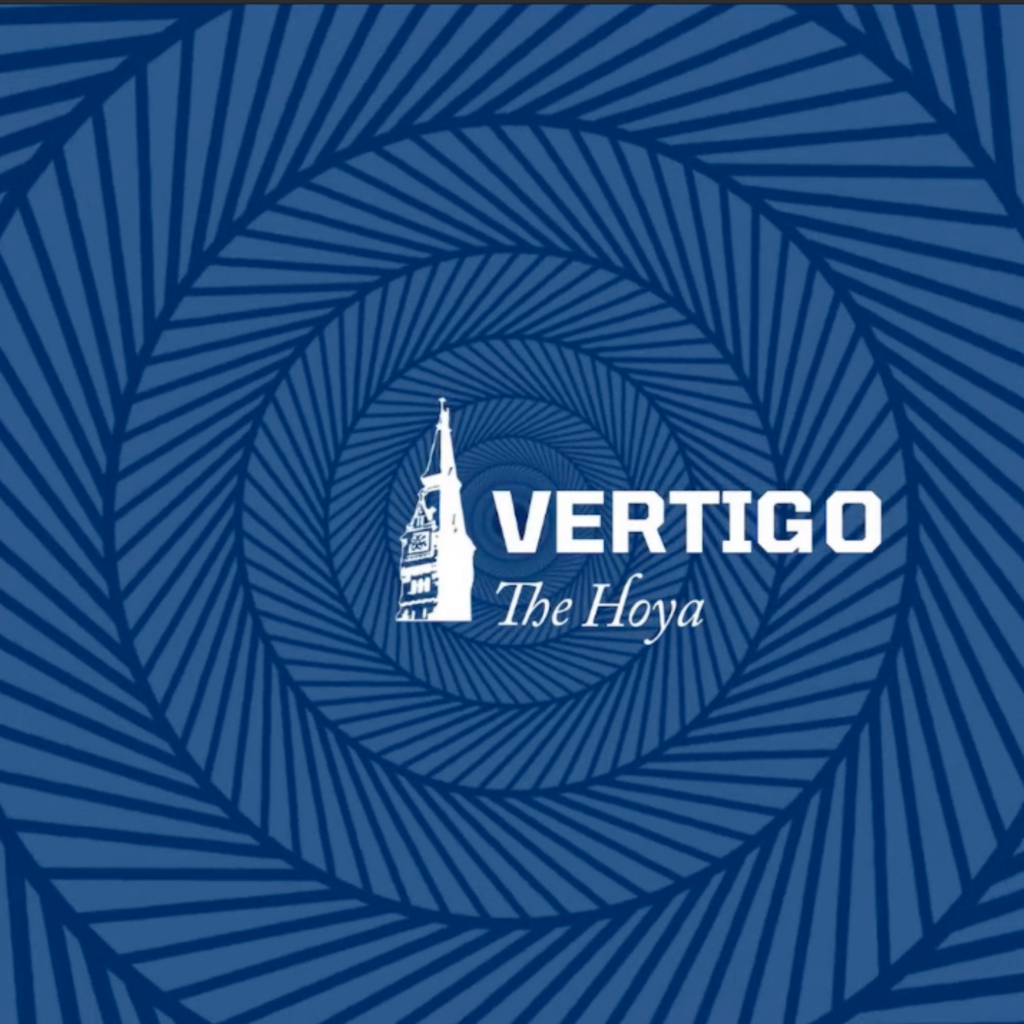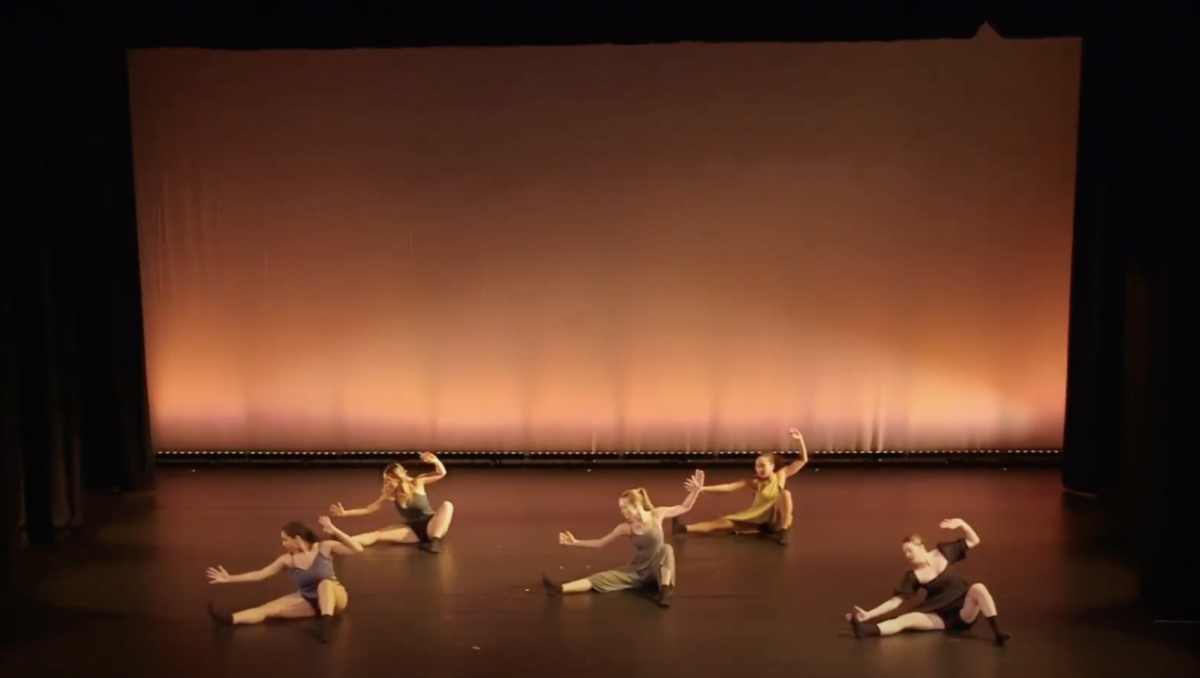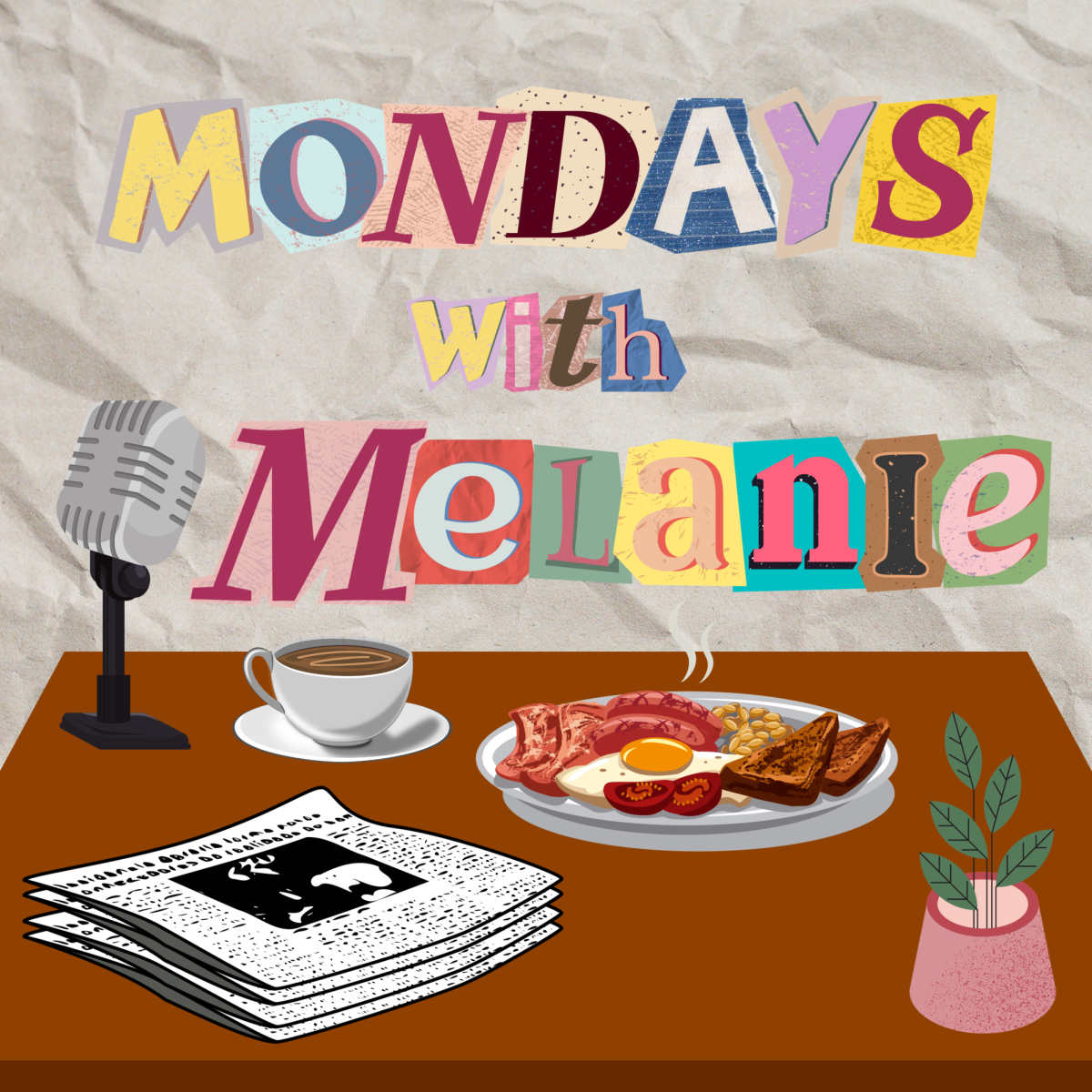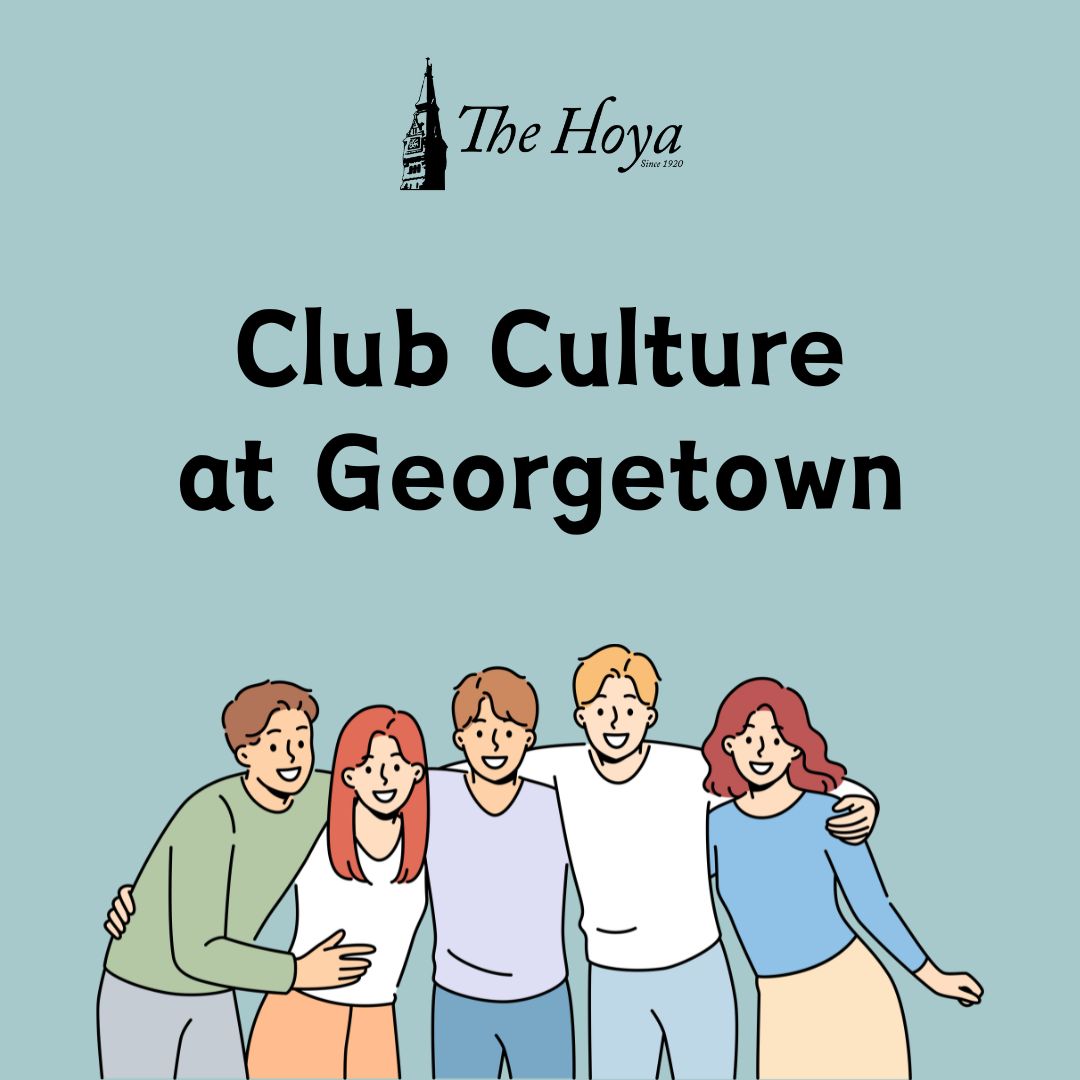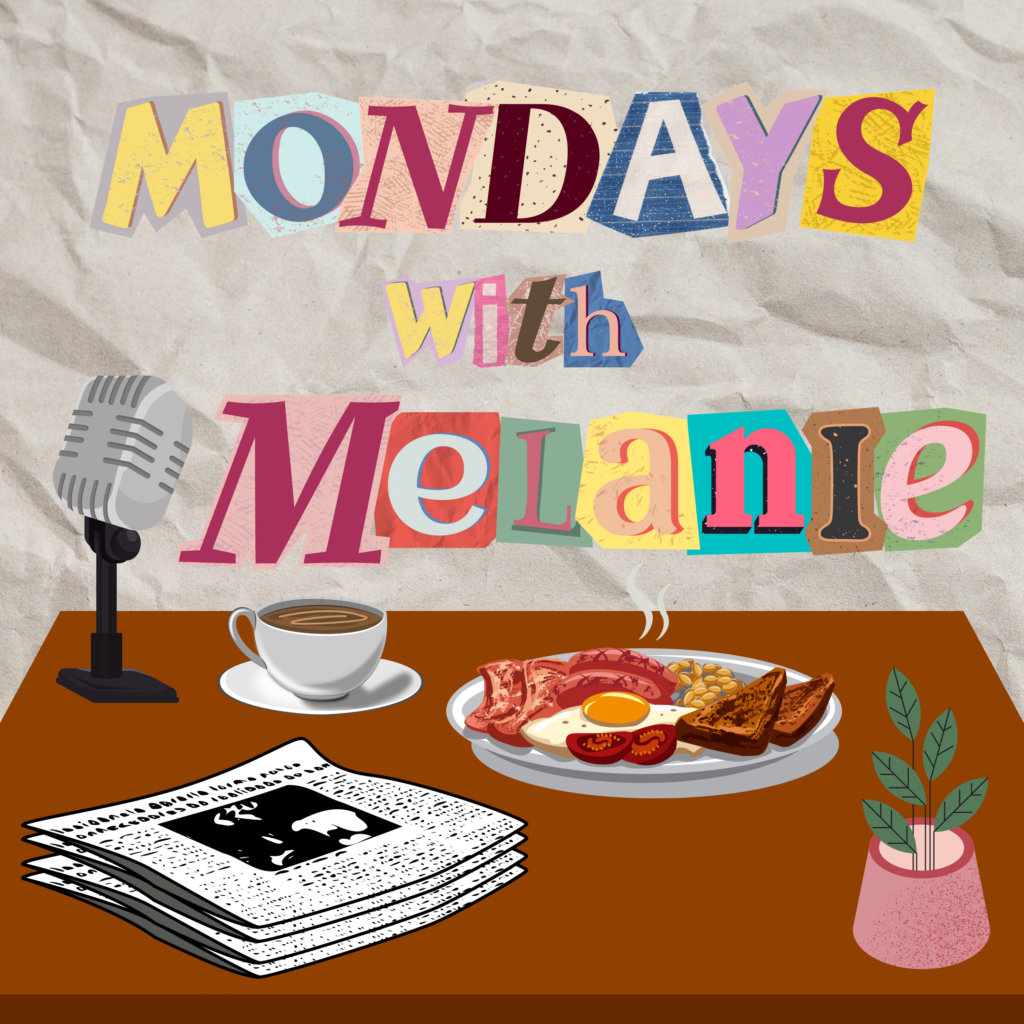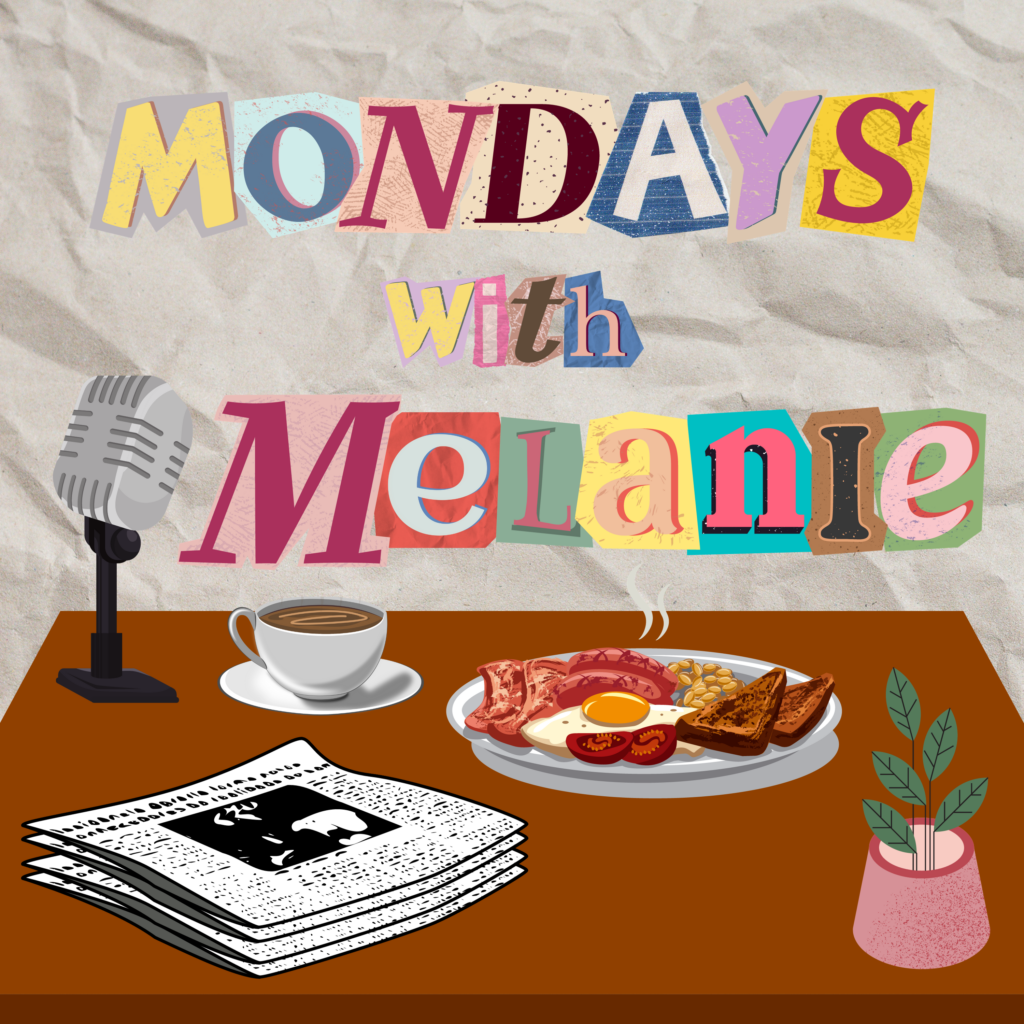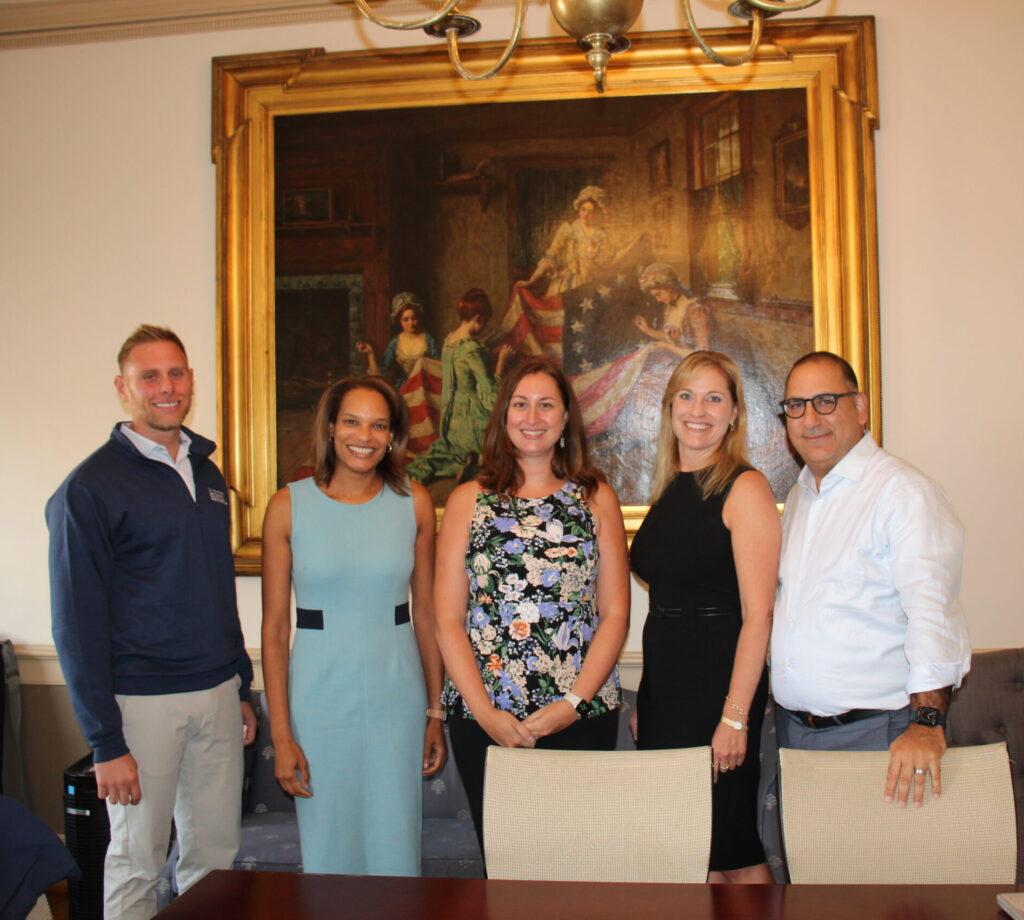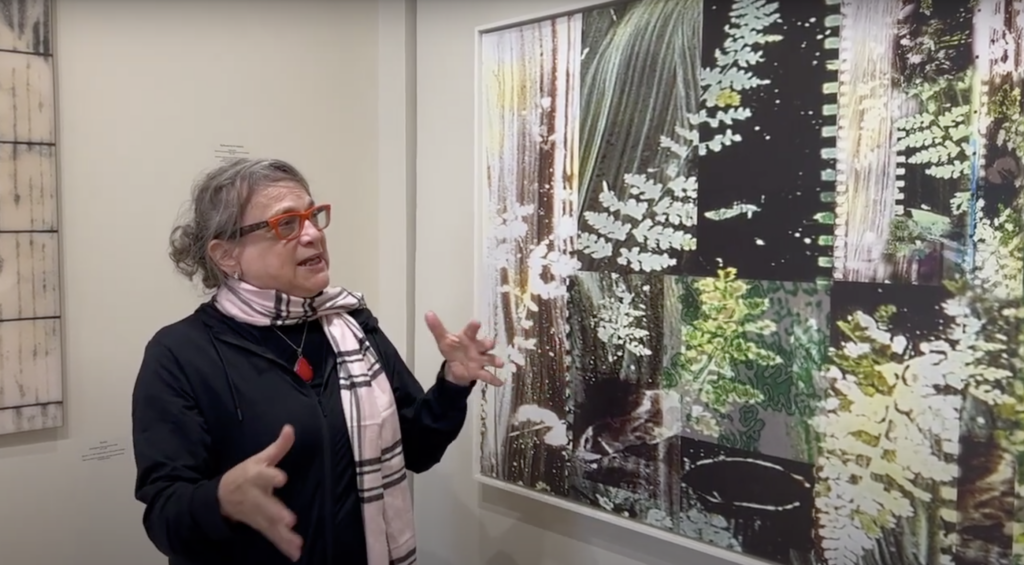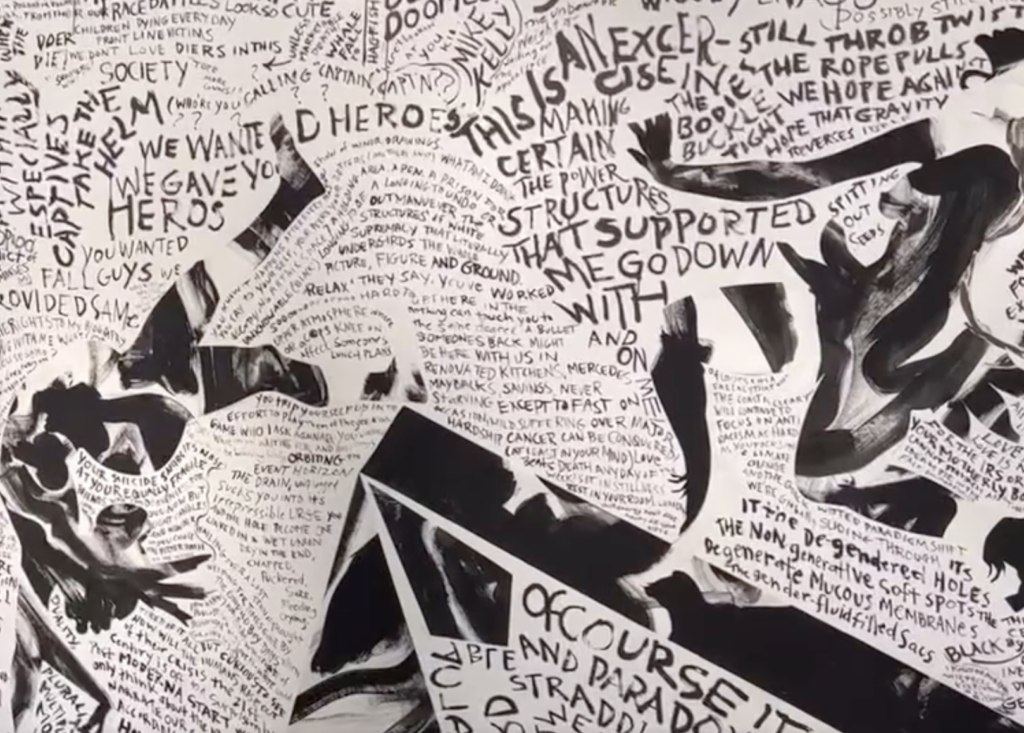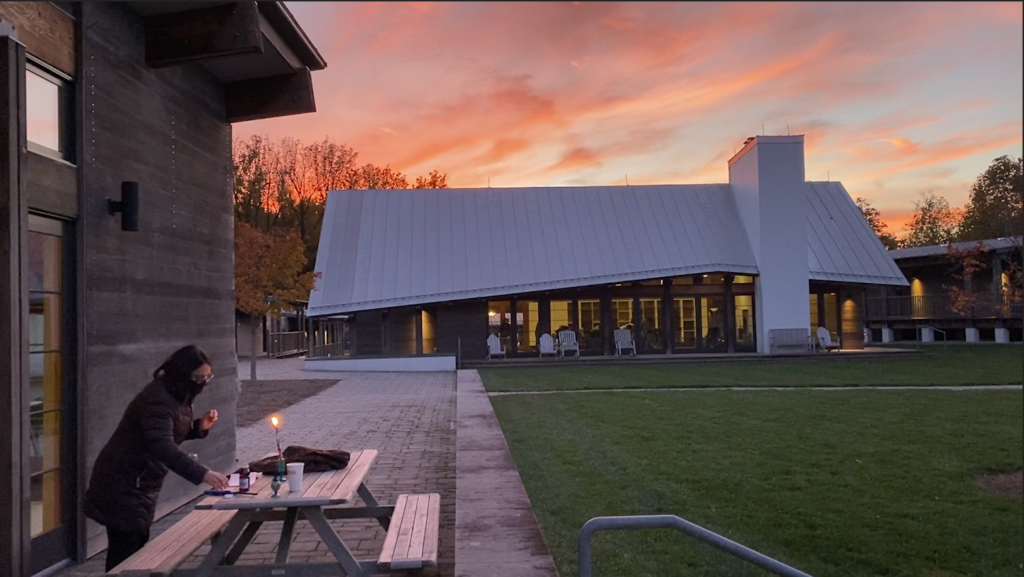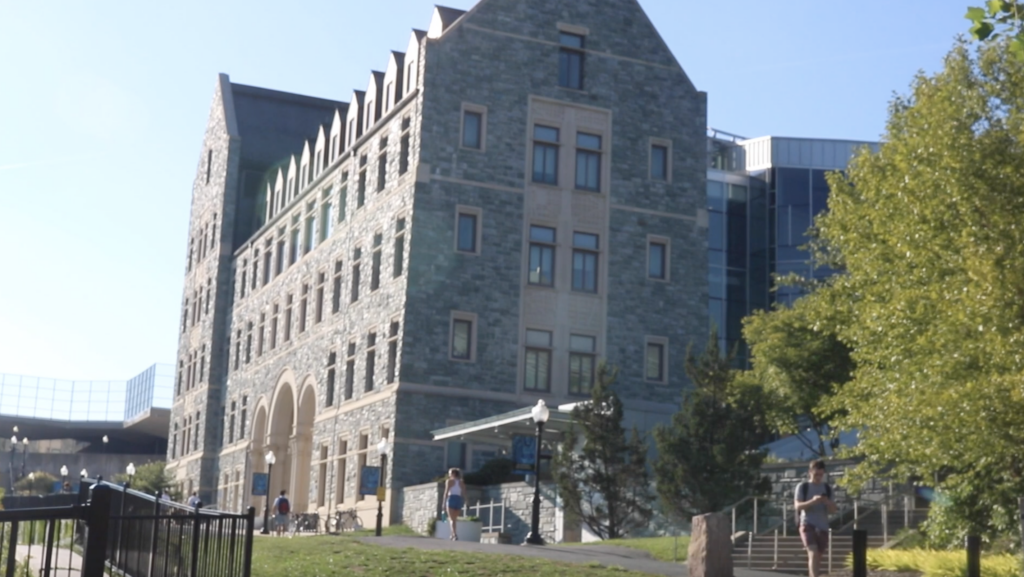Vertigo is a podcast series on entrepreneurship, mindfulness, healthy work ethics and how to navigate Georgetown socialization without losing one’s purpose. Named Vertigo due to the loss of balance one may experience from the pressure of a Georgetown education, this new series highlights Hoyas who demonstrate successful mentalities and achievements in their approaches to mental health, entrepreneurship, socialization, internships and more.
In this debut episode, multimedia staffer Irini Fournier (MSB ’24) sat down with Georgetown graduate Sid Sindaram (SFS ’21) to discuss Aura Digital Inc., Sindaram’s NFT data visualization and voice recognition technology firm. Tune in to learn about Sundaram’s story, what inspired him to create Aura, and how he started his own company while still an undergraduate student at Georgetown.
Podcast Transcript:
IF: From The Hoya, I’m Irini and this is “Vertigo,” a mini podcast series on the mindfulness and discipline behind entrepreneurship, the balance of maintaining a healthy work ethic and navigating Georgetown socialization without losing your purpose. We invite speakers that exemplify successful mentalities and achievements in their approaches to health, business, studying, socializing, clubs, internships and really any troubles students may relate to. As our guest today, we’ve got Sid Sundaram (SFS ’21). Sid graduated this December with a major in international political economy, and a minor in art history from the Walsh School of Foreign Service at Georgetown University. He recently founded Aura, a cutting-edge data visualization and voice recognition technology firm. He now works remotely between his D.C. startup and New York City. So welcome Sid, so good to have you as our debut. Do you want to get straight into telling us what Aura is about or do you want, do you have a fun fact to share with us to start off?
SS: Yeah, for sure, I think we can get started by talking about Aura. So we’re sort of working at this intersection of art, technology, cryptocurrency and politics to an extent. And so what we do is we sort of, you know, take moments that everyone experiences, and we kind of abstract them and allow people to experience those moments in very different non-traditional, artistic ways. And so the technology that we’ve created over the past year is essentially a technology where, if me and you went out for dinner, I could take out my phone, I could record that interaction, the audio of it, and then I could essentially run it through an algorithm which would spit out some data about when you’re speaking, when I’m speaking and track each of our emotions over time. And then we take all of that data, and we essentially turn it into an art piece. And the reason that we’re doing this is sort of, because a lot of the times when you think about how people traditionally capture moments, it’s usually through a photo or through a video, very rarely through an audio recording, and it doesn’t capture all the nuances that exist within that experience.
IF: The nonverbal language of it all?
SS: There’s kind of this trade-off between experiencing a moment and capturing a moment. So if you go to a concert, these days, you’ll sort of see people kind of take out their phone, they’re recording the concert, and they’re sort of giving up being able to live in the moment in order to capture it. And so we also wanted people to be able to live their experiences, be in the moment, but still capture that experience at a very nuanced level, where you can look back at it and kind of see, you know, what were the emotions there? How did that conversation play out? What did we talk about? What was the interaction like, and you can sort of look at all your experiences and kind of see the differences between each of them?
IF: So I don’t want to spend too much time on this, because I want to get to the nitty-gritty of how everything started and what it meant to you. But if you can explain how the technology works, just for one minute. Does it go by wavelengths of the audio? Or how does it work?
SS: So do you know why you and I sound different to each other?
IF: I don’t know why?
SS: So it’s essentially this musical theory concept called camber. And so if I sing middle C, and you sing middle C, it’ll be the same note, but will still sound different to each other. And so the wave essentially, of middle C, if you play on the piano will sort of look like this. And when you sing it, it’ll look like this. And then you have some tiny little waves around it. And those waves are sort of what is essentially what your camber is.
IF: The fact that I’ve been singing opera for like, seven years, and I still don’t know what this is.
SS: But yeah, it’s a super interesting concept. And so we’re able to create these buckets of different values of camber. And as we process the audio, the takes different slices of and is like which bucket does this kind of fit in? And then from there, we can understand when are you speaking versus when am I speaking, the way that you express fear is so different from the way that I express fear. But right now, we essentially have huge libraries of data that are labeled where it’s like, you know, this sound or this fragment of speech is labeled with fear.
IF: Wait and apart from this being an art piece, don’t you think that this might actually be kind of useful for people sort of analyzing themselves and going through maybe a job interview? I know that “Black Mirror” did an episode on it where it was almost like an Insta story. You can kind of see all of your memories and analyze them bit by bit. I don’t know, if you, I don’t remember the…
SS: There’s just so much that you can do with this. But essentially, analyzing emotion is such a huge task, because we express emotions differently. If you’re speaking a different language, you express emotions differently. If you’re from a different culture, you express your emotions differently. And so it’s all very nuanced and unique and individualistic. And so this emotion recognition is probably like, you know, we’ve got this much to go. And we’re probably like, right here at the very, very beginning. But still, I think, you know, the step from here to here was a pretty, pretty big challenge for us.
IF: What in your environment? Or what in your life made you want to start this inspection on emotions almost? Did the idea evolve over time? Why did you call it Aura, to give me a bit of context?
SS: So I’ll answer both questions. This idea came to me actually when I was having dinner with a bunch of friends down on Prospect Street, and we were at a restaurant there. And I just sort of found that the food was terrible, but the conversation that we were having was just incredible. And I kind of sat back and I observed what was going on, and one person would leave the conversation like one person would bounce off with ideas, and another person would chime in with jokes, and there was so much going on. And it was, it was like this exchange of information and ideas and jokes and feelings, and there was no way of really capturing that. And I kind of felt like that was a problem. And so, you know, Aura was sort of a response to that, I guess, a problem that I saw. And the reason that I call it aura is it essentially deals with this idea of synesthesia. So this is, you know, Pharrell has this, Lorde has this where you can essentially see sound, and you can taste color, and your senses are sort of switched in a way.
IF: Essentially, you could see people’s fear, at a specific…
SS: Sort of, or when they would speak you could see that sound emanating from a certain wavelength or something like that.
IF: And what are some trends that you have been able to pick up on in the way that people interact with each other in the types of social situations that they were put in?
SS: Hmm, that’s a good question. We haven’t compared enough for me to give you a good answer about that. But I think we’re not necessarily looking at the output from a data perspective, we’re looking at it from an artistic perspective. It’s sort of like you look at it, and you’re kind of like, you know, do I see myself in this work? You know what I mean? I think there’s a lot of ways in which technology can be bad. And you know, there’s privacy issues, there’s data issues, there’s all this stuff, but at the end of the day, technology is power, right? And so, if you can use that power to connect people, then I think that’s really what we’re trying to do at the end of the day.
IF: That’s such a powerful statement.
SS: It’s cool how sound can be something that transports you.
IF: I can’t live my life without these headphones. Like, I wear them all the time.
SS: Music has always been such a huge part of my life. And so, you know, it’s, it’s interesting.
IF: How has it been a big part of your life?
SS: I mean, I’ve always played music. I used to play alto sax, I used to play piano, I’ve always been big into listening to music.
IF: What did you have to give up, in order to be so dedicated to your purpose, to this endeavor?
SS: I don’t even know where to start with this, I think you have to give up a lot of time, you have to give up a lot of emotion, you have to give up a lot of mental health because you know, you’re trying to start a company, you’re in school, you have to do all your schoolwork, then you have to go back to your house and you have to work on your company. And then maybe you’re sacrificing your sleep, or maybe you’re sacrificing your social life. And throughout doing this, at the end of the day, it’s like your baby, right? And so whether it lives or dies is kind of in your hands. And so, if you have an experience or something doesn’t work out, which happens way more often than I thought it would, that affects you quite negatively.
IF: How do you maintain that drive within then, especially when you’re not making profit yet? Or when you’re breaking even? How do you maintain a drive and how do you use your rhetoric? I know that you’re a great communicator.
SS: I think, like, you’ve got to put 200% if you expect anyone to put 100%. I’ve, you know, done my best to put that 200%, and I also think it’s also about finding the right people that connect with the idea. Some people will be like, oh, you know, this is super cool, but I don’t really know. And then there are some people who will be like, hey, I love this and we can take it here and we can take it here and we can take it there. And these are all the things that we can do with it. And so finding those people is hard. But when you find them, and they believe in what you’re doing as much as you do, then I think, it kind of works itself out. But it’s definitely not an easy process. I don’t get a lot of sleep.
IF: That’s good, that’s healthy.
SS: I definitely think life could be a lot more relaxed if I didn’t have to sleep on someone’s couch. But you know, you kind of do what you have to do. And these things sort of seem obvious to me right now.
IF: I think that there’s a beauty in chasing one’s purpose. And it doesn’t necessarily have to be a work thing. It can also be just staying healthy, working out, taking care of your mental health, practicing yoga, even. But I think that there’s a beauty to having your hobby or having that one thing that you do, playing music, and sort of having a routine about it, and sacrificing your social life for things that other people deem more important to really make that grow. And to grow as a person. I also wanted to ask you, what are the lessons that you’ve taken from it?
SS: You know to be fully fair, I love my team, we have a great time together, you know, we’ll sit down and we’ll work the whole day, then we’ll go for a nice dinner, we always have a great conversation, we always have a great time. Like we still managed to kind of have fun, and still work on this at the same time. So, you know, as much as I could make this sound like oh, yeah, this chore. And it’s so difficult. And I sacrificed everything for this. At the end of the day, I’m pretty, I mean, I think we all make sacrifices for everything. And the sacrifices that I’ve made seem very obvious to me. And, you know, I feel like I’m sacrificing it for something. I’m also going to enjoy something that’ll also kind of benefit me. So maybe I’m lucky in that way. But yeah.
IF: That’s so cool. Do you think that the people that you surround yourself with, whether it be in college or elsewhere, contribute to that?
SS: At the end of the day, I think it’s all about the people that I’ve met here. My friends, for example, constantly inspire me and constantly support me with what it is that I’m doing and give me fresh ideas. And when I’m sort of thinking about something, I ask them about it, and their feedback always goes into making the product better. And so having smart people around you that are also motivated in very different ways is great. And I think that’s what’s so beautiful about being in this environment. You know, I think you have to make a conscious effort, and you really have to want to go meet people that are different from you. Because it is so easy and so comfortable to just go be in your comfort zone. In my experience, like I’ve been to 13 schools in my life.
IF: Yeah, I was gonna say you’ve traveled everywhere. Like you’ve been, wait, I have the list here. You’ve been to Hong Kong, Sydney, San Francisco, Shanghai, mostly China, but Shanghai and Beijing, traveled through cities. What was like the longest amount of time you’ve been in a school?
SS: That’s a good question. Four years?
IF: Okay. Pretty long. Where?
SS: Beijing was four years.
IF: Do you speak Chinese?
SS: I do speak Chinese? I mean, you as well, you’re also from a bunch of different places. And at the end of the day, I think, different cultures and different types of people from different places and different walks of life, appreciating and seeing the beauty in each other is a net positive for the world. And so I think that has been my experience, like the reason I’m doing this is because I’m a globalist at the end of the day, right.
IF: Did you, did you grow up with Bollywood?
SS: I did grow up with Bollywood. Yeah, I did. I did. Yeah, my parents watched a lot of Bollywood.
IF: Do you know Badtameez Dil?
SS: I do know that song. Yeah it’s a good one.
IF: What advice would you, would you give Georgetown students?
SS: Am I qualified to give advice?
IF: You are, you wouldn’t be here if you weren’t.
SS: I think Georgetown is, I said this already, but I think Georgetown is about the people at the end of the day, and that’s what you’ll take with you for the rest of your life. And I think the more people that you meet and the more, I guess, stories that you hear, the more connections that you make, the more, I guess, experiences that you’re able to connect with, the more you’ll grow as a person, the more you’ll understand the world around you, the more you’ll understand yourself. I think that that’s what’s super valuable about being at a place like this, and so leverage that as much as you can.
IF: What tools would you say have been useful to you to maintain that mental health, to maintain that work life balance, to maintain yourself while pursuing so many interesting endeavors?
SS: I think, find pillars in your life, that sort of keep you going. And they can be very, very simple things. For example, I was super messy when I first got to Georgetown, and I never made my bed. And then I sort of started doing that every single day and then it became a habit and it becomes a pillar of your life. And it can be that small, or it can be you know, you go to the gym, or you just have these kinds of constants that, you know, keep you motivated and kind of uplifted. And I guess hold up everything else that it is that you’re doing. Like whether it’s you know, you meditate every day for 30 minutes, or, you know, maybe …
IF: Do you?
SS: I do, maybe it’s that you box, or maybe it’s that you do something else. But I think if you do the small things over time, you sort of build pillars, and those pillars kind of hold up everything else and keep things in balance. And I think that’s what’s been really beneficial to me. It can be writing down what you need to do in a planner. But if you do that every single day, it just becomes a habit. And then you keep it there. And then it just is one of those things that keeps you grounded and keeps your life moving in the right direction. And I’m not a huge routine guy, but I think just like having cool stuff that you do everyday, I think that’s brought me a lot of stability, especially, you know, when you’re doing something that’s very unstable, like you have to hedge risk in some way, right. So you’re in the startup world, you’re trying to start your own company, you’re getting curveballs every single day. And so what is keeping you stable? How do you not fall off the wagon?
IF: That was super inspiring. That was, that was so inspiring. We loved hearing about Aura. I’m personally fascinated by it. We loved hearing about how that sort of related to your mental health and how you were able to balance it. And thank you so much for joining us.
SS: Awesome. I’m so excited for this podcast. I think it’s gonna be so great. I’m psyched for you as always.
IF: This podcast was recorded by Irini Fournier (MSB ’24) and edited and produced by Mia Rasamny (COL ’24) and Valerie Blinder (COL ’24). Special thanks to Sid Sundaram for taking the time to speak with The Hoya.


